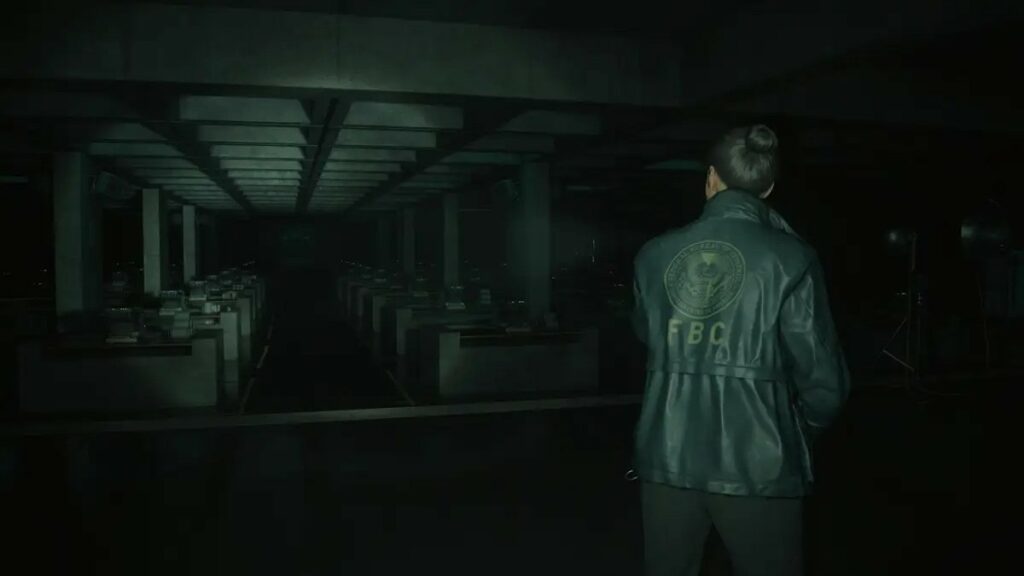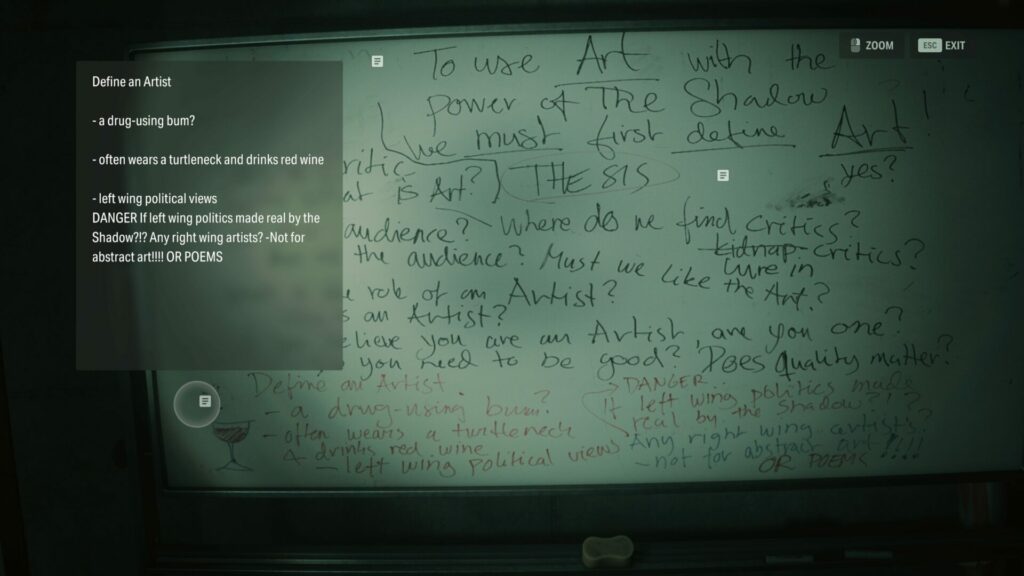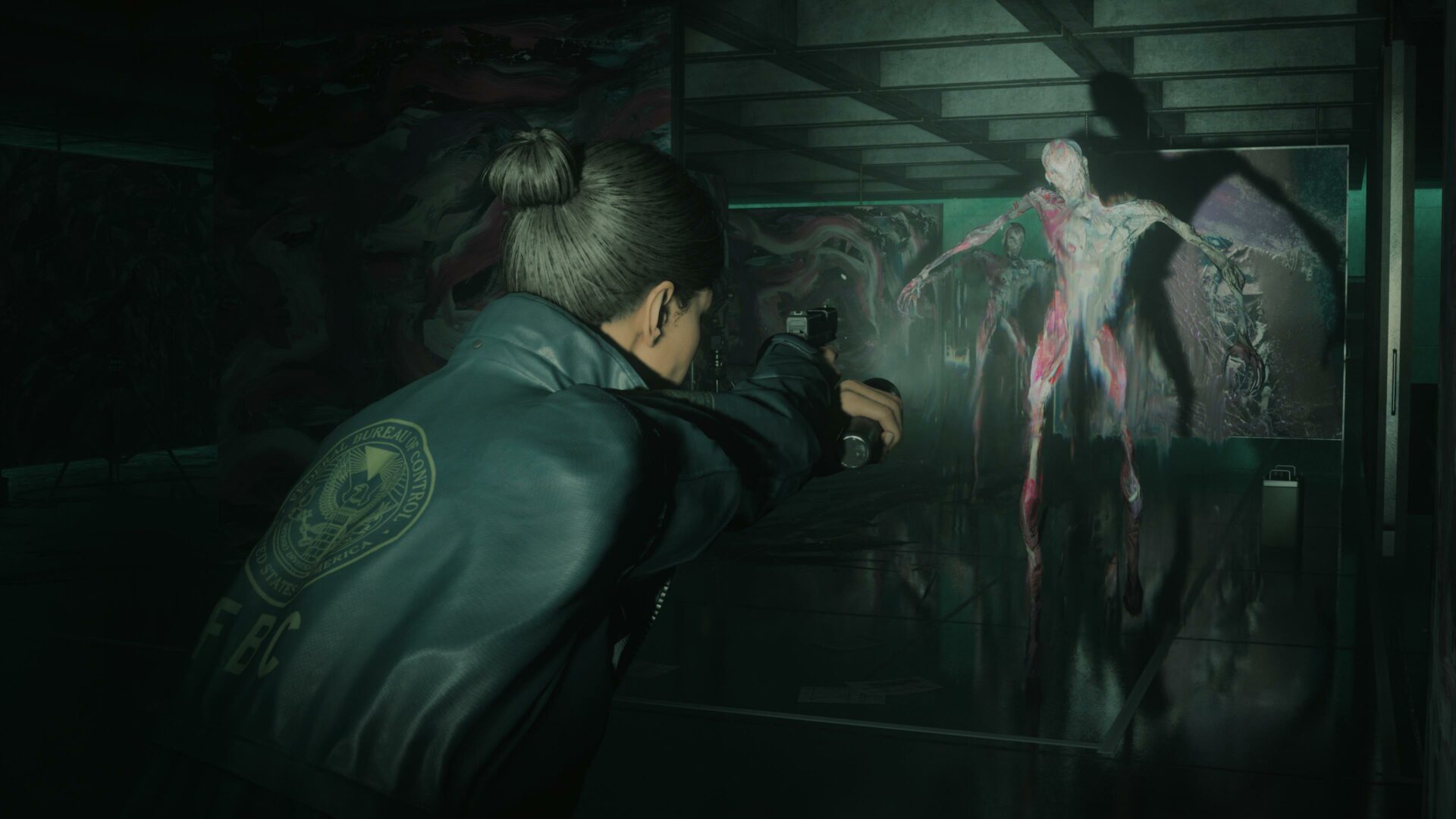Alan Wake 2 is a meta experience. The game plays with stories within stories to great effect, travelling across layers of fiction distorting realities. By the time the first expansion for the game was released, Night Springs, the self-knowing postmodernism was threatening to become a little insufferable, as Sam Lake appeared as a version of himself working on a game within the game. Thankfully, the second DLC, The Lake House, finds a whole new way to be meta. Instead of just a work of art within a work of art, the expansion explores the concept and creation of art within art. The Lake House is a fascinating take on the world of Alan Wake, and the wider Remedy-verse, and a fitting final word on Alan Wake 2, examining the battle between art and AI, and the human ugliness that can hide behind both.
This conflict is personified by two characters: the Marmonts, heads of the Lake House FBC facility running experiments on ‘the shadow’ of Cauldron Lake and its ability to turn art into reality. Jules Marmont uses, or rather abuses, an actual tortured (literally) artist, creating paintings with genuine emotion. Diana Marmont seeks to use machines and algorithms to produce manuscript pages in the style of Alan Wake. Both are great concepts to introduce, and it’s almost a shame Remedy waited until the game’s final update. I’m shocked it took this long to get actual artwork coming to life, terrifying painted enemies, rather than just novels, and it’s a great expansion on the artist character who only had a very brief appearance in the first Alan Wake game.

The room of writer-less typewriters clacketing away is an amazing visual; a brilliant combination of Alan Wake and Control. That mixture of the two is handed very successfully in The Lake House. The survival horror expansion plays like Alan Wake 2 but in the world of Control. I kept trying to telepathically pick up vending machines and filing cabinets but instead had to conserve bullets to survive encounters with enemies. But it was nice to see all that retro architecture from Control again, like a slice of the Oldest House in the Pacific Northwest. And I’m always a sucker for video games where the protagonist stumbles into a location where shit has gone down, having to explore and clear it out, working out what has happened through documents and the odd remaining survivor, just like Control.
The developers don’t make the simplistic, all-to-easy argument that art is good and AI is bad. Both of the Marmonts are monsters and are implicitly linked: they’re husband and wife and co-directors of the facility, they are in this together. The expansion isn’t a celebration of art but a warning for how it can be manipulated and made dangerous. The artist is locked away and tortured to create. It’s just as vital a parallel for corporations manipulating artists as Diana’s work is for generative AI, which is just a tool for the same brand of human repugnancy and lack of creativity. Her work takes all creativity away for little result because she completely misses the point, trying to examine art as a unit of measurement, from tone to sentence structure. Remedy, the weird and wonderful studio in Finland, making art and fantastic video games, are rallying against larger corporate studios churning out rubbish through AI, yes, but also by forcing creatives to produce content they have no passion for.
The game’s argument never gets preachy or arrogant, however. It’s a fun examination of the conflict and the writers are clearly willing to laugh at it. At one point in the story, Diana, who runs the AI ‘model,’ accuses her husband of plagiarism, which is hilarious. The manuscript pages written by the machine can be found and are a funny parody of Wake’s work, which is already close to being a parody of real horror and pulp fiction itself. One document in particular gave me a big laugh, where the scientists are trying to “define an artist” and settle on “a drug-abusing bum” who “often wears a turtleneck and drinks red wine” and has “left wing political views.” This is followed with a warning: “DANGER if left wing politics made real by the Shadow?!?”

One meta element encapsulating the point the game is making is the reveal surrounding the musician Poe. A new song by her is featured in the DLC, 6 Deep Breaths, alongside multiple versions of This Road as an ‘end of chapter’ song in the base game. A collectable document actually writes her into the narrative of the game, a real person being a character in this world, and states that she was a prisoner locked away in the facility but has now escaped containment. Her music is diegetic. The reality for Poe, metaphorically at least, has not been too dissimilar. She has been absent from publishing new music for so long because of legal gag orders from publishers and convoluted contracts from corporations preventing her from sharing her art, so Poe being involved in the story is a great piece of real world commentary that is still very Alan Wake, highlighting the issue that the DLC is exposing.
Overall, The Lake House is a great little experience, both scary and funny. It offers a different angle on the FBC, getting out of the (albeit expansive) confines of the Oldest House, and following a seasoned agent in an offshoot facility run very differently. The new enemies are creepy but I was disappointed in the final boss fight: I thought there was something I wasn’t doing right because I was shooting Diana and nothing happened but no, you just have to keep shooting until she’s dead, I guess. There’s also an interesting tease for what’s next with the optional Dylan objective. It’s so cryptic I got almost nothing from it but looking back on it once Control 2 releases I’m sure there’s insight in there, just as there was with the Alan Wake 2 tease in Control’s DLC. Besides, going through a different door with a different symbol in the Oceanview Motel was a great moment.
But as excited as I am about the future, I thought The Lake House was at its best when it used the swan song of Alan Wake 2 to make explicit, though with subtlety and humour, a point about creativity and art that is at the heart of the game, franchise, and industry.








